Remembering Titanic 111 Years Later
The sinking of the Titanic stands as one of the most renowned tragedies in recent history, sparking countless narratives, multiple cinematic adaptations, a musical, and extensive academic exploration.
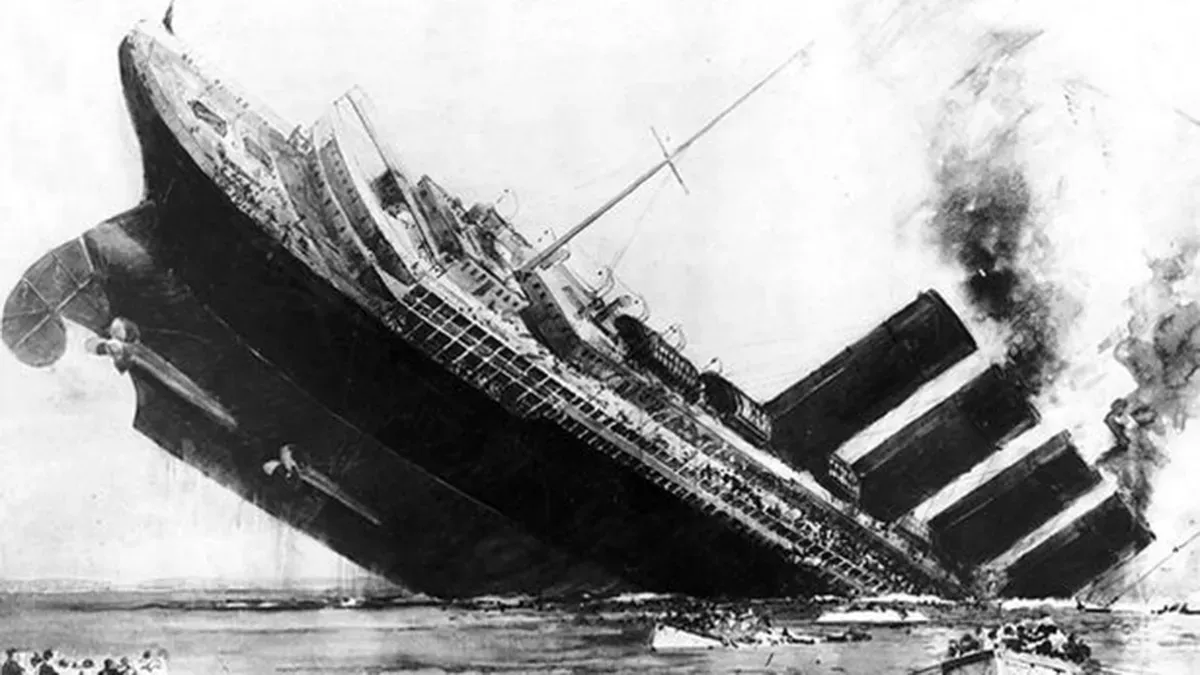
Introduction:
The Titanic, once hailed as the "unsinkable" marvel of the early 20th century, tragically met its fate on April 15, 1912. Now, 111 years later, the memory of the Titanic disaster still looms large in our collective consciousness. The sinking of this iconic ship continues to captivate our imaginations, serving as a reminder of the fragility of human life and the profound impact of a single event on history. In this blog, we embark on a journey to remember the Titanic and explore its enduring legacy.
The Titanic, a British luxury passenger liner, tragically sank on April 15, 1912, during its inaugural journey from Southampton, England, to New York City. This devastating event claimed the lives of approximately 1,500 passengers and crew members. The sinking of the Titanic stands as one of the most renowned tragedies in recent history, sparking countless narratives, multiple cinematic adaptations, a musical, and extensive academic exploration. Its profound impact has generated significant research and scientific conjecture.
How was Titanic built?
In the early 1900s, the transatlantic passenger trade was highly competitive. White Star and Cunard were the leading companies. To rival Cunard's upcoming fast ships, White Star's chairman, J. Bruce Ismay, partnered with William Pirrie of Harland and Wolff shipbuilding firm. They decided to build large, luxurious liners instead. The Titanic, along with its sister ships Olympic and Britannic, was constructed, featuring ornate decorations and lavish amenities. The goal was to provide unparalleled comfort and secure White Star's position in the market.
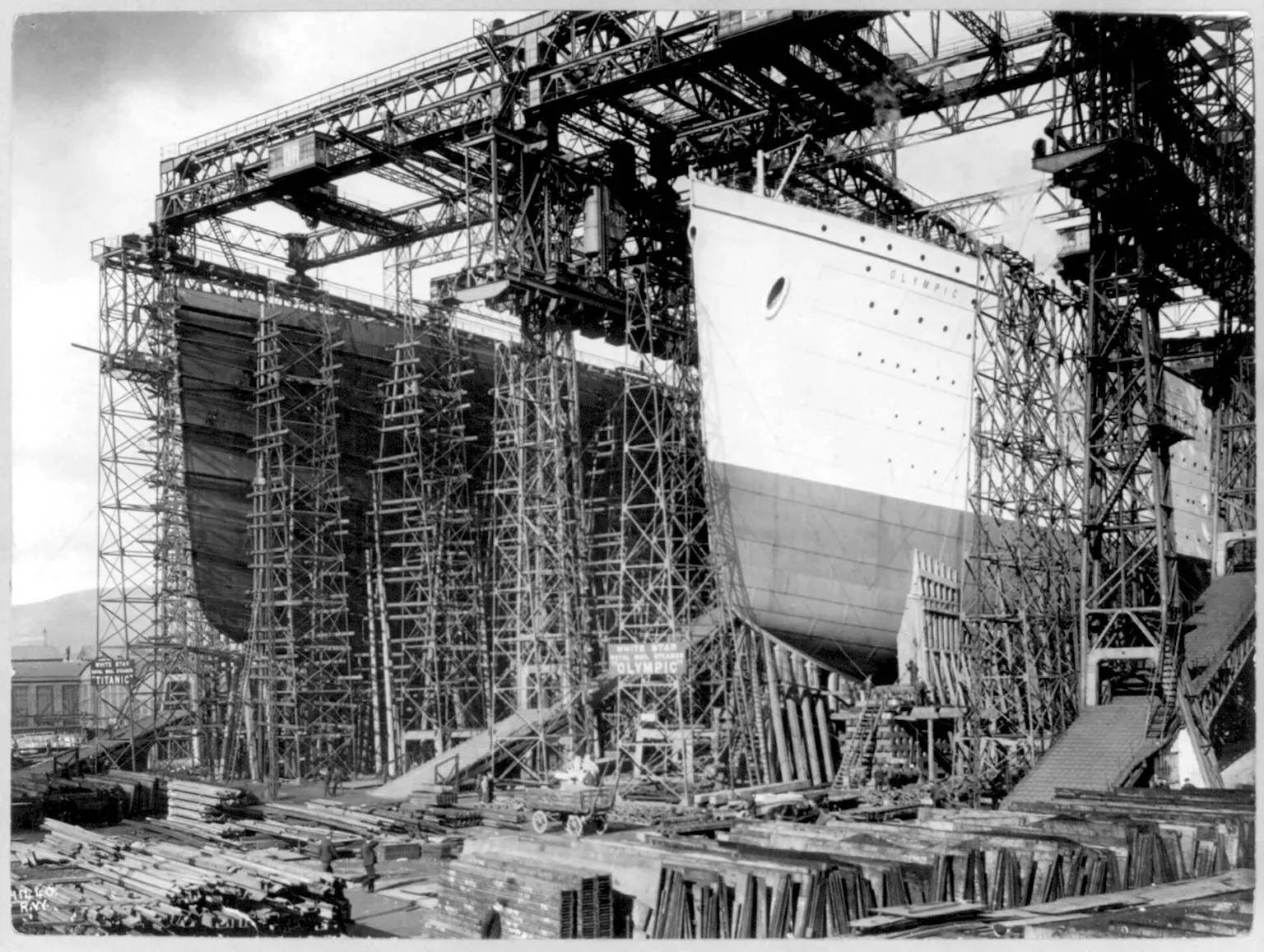
The Titanic had 16 compartments with closing doors to contain water in case of hull damage. Though considered watertight, the compartments lacked caps at the top. The ship's builders claimed it was unsinkable, as only four compartments could flood without endangering buoyancy. After launching in May 1911, the Titanic underwent outfitting and design adjustments. It passed sea trials in April 1912 and was deemed seaworthy. The Titanic was one of the largest and most luxurious ships, with a tonnage of 46,328 tons and dimensions of approximately 882.5 feet long and 92.5 feet wide.
The Fateful Voyage
On April 10, 1912, the Titanic embarked on its maiden voyage from Southampton, England, to New York City. Led by Captain Edward J. Smith, known as the "Millionaire's Captain," the ship carried prominent passengers such as Benjamin Guggenheim, William Thomas Stead, Isidor and Ida Straus, and John Jacob Astor with his wife, Madeleine. A near collision occurred at the start, but was narrowly avoided. The Titanic made stops in Cherbourg, France, and Queenstown, Ireland, before setting off for New York City. With around 2,200 individuals on board, including approximately 1,300 passengers, the iconic voyage was underway.
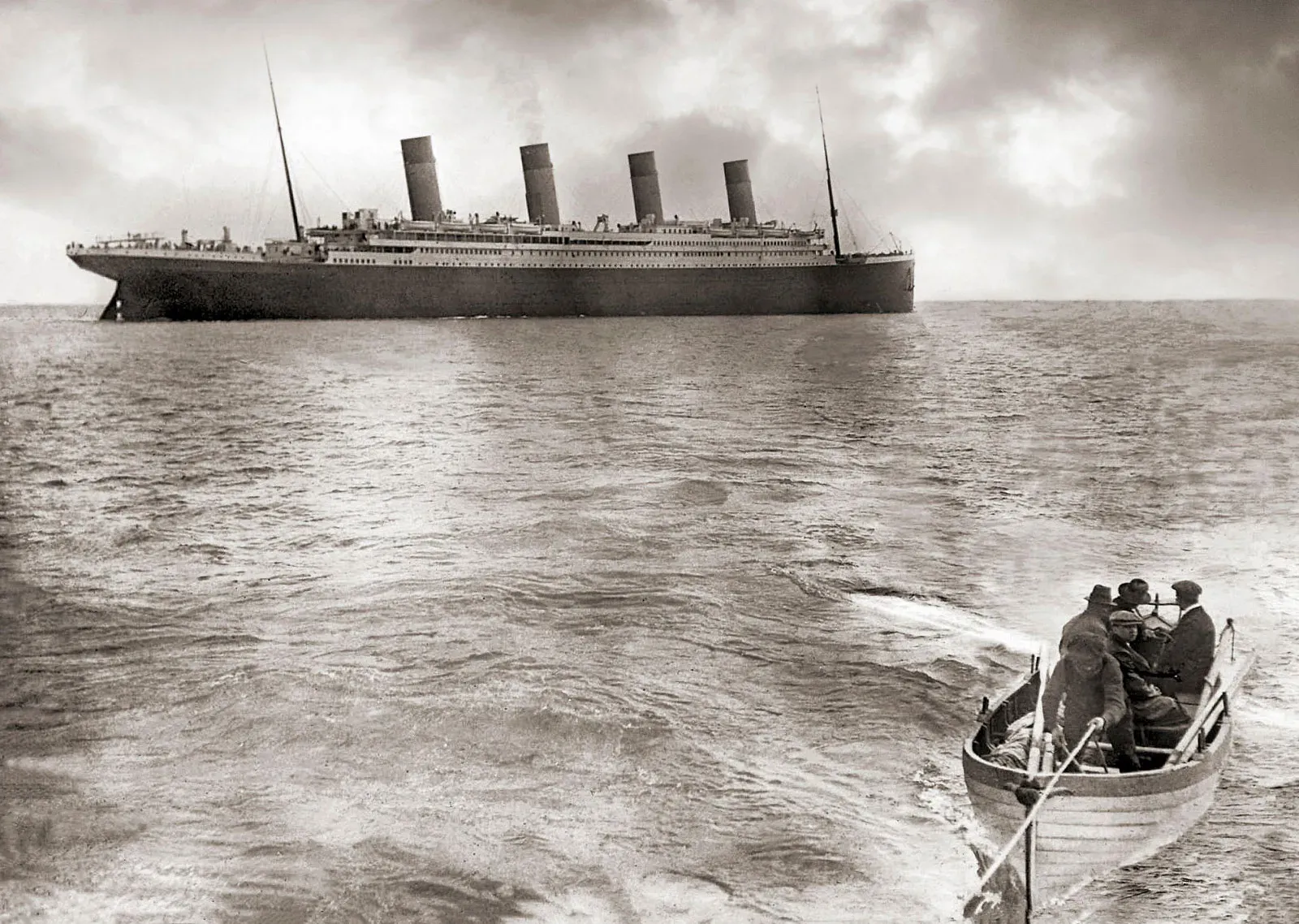
Final hours before the Tragedy
On the night of April 14, 1912, as the Titanic sailed through an area known for icebergs, the wireless operators received iceberg warnings. However, not all of the warnings reached the ship's bridge. At around 11:40 PM, the lookouts spotted an iceberg and alerted the bridge. The ship attempted to avoid the collision by turning and reversing its engines, but it was too late. The iceberg scraped along the starboard side, damaging several supposedly watertight compartments.
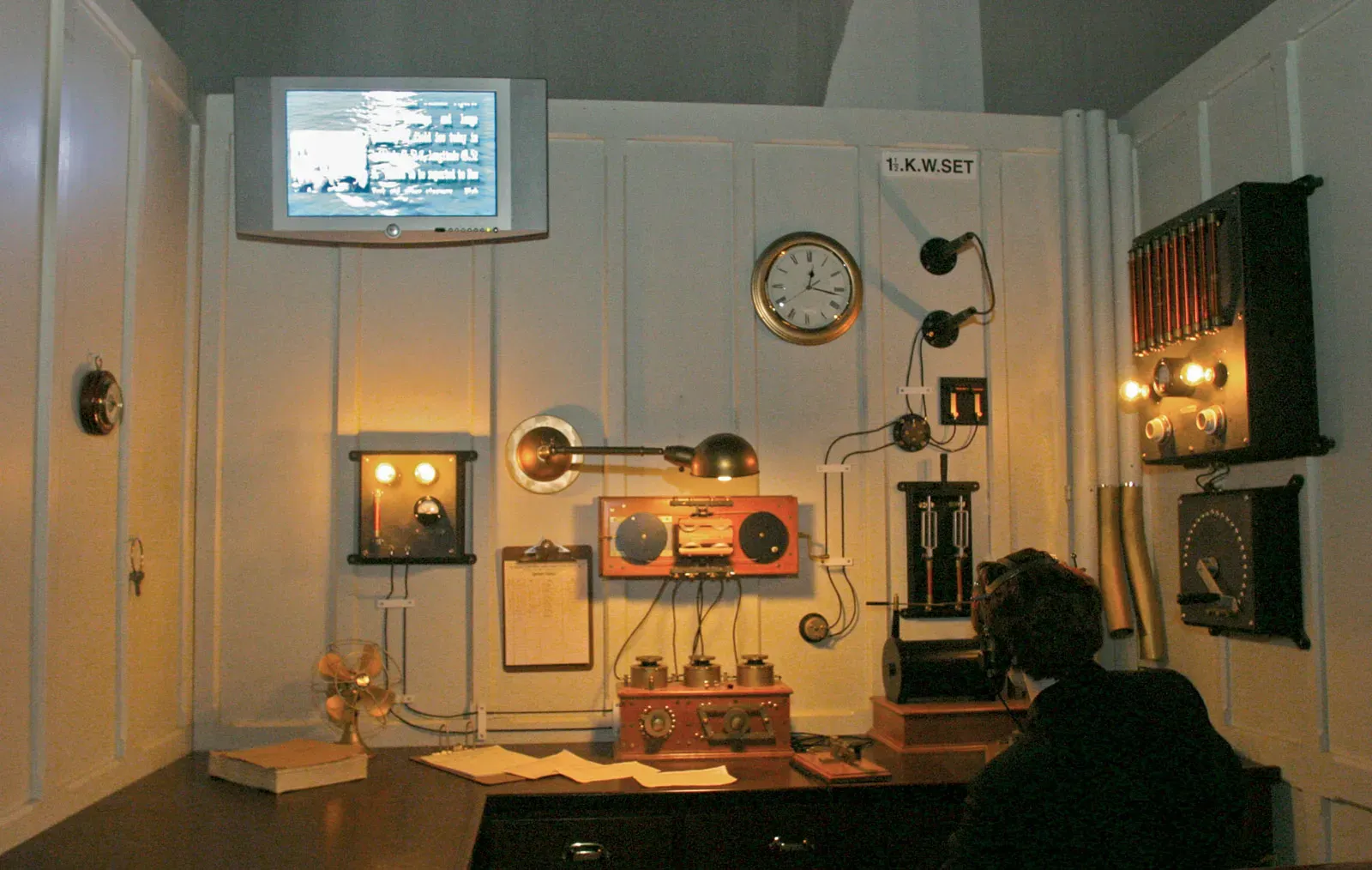
Thomas Andrews, the ship's designer, realized that the Titanic was doomed as water would overflow from one compartment to another. Distress signals were sent, but the closest ship, the Carpathia, was still hours away. Despite other nearby vessels and a sighting of a ship, help couldn't reach the Titanic in time. Tragically, the ship would sink in the early morning hours of April 15, 1912.
The Sink
As lifeboats were started to launch from the Titanic, orders were given for women and children to board first. Despite having more lifeboats than required, the ship's capacity fell far short of the total passengers. Some lifeboats were launched with few occupants due to concerns about their capacity. Only 705 people would be rescued in lifeboats, leaving many others behind.
The Titanic's musicians played music to entertain passengers as they waited to board lifeboats. The exact duration of their performance is uncertain, but none of them survived the sinking. By 1:00 AM, water was entering the Grand Staircase, causing panic among passengers. Desperate distress calls were sent as the situation became dire.
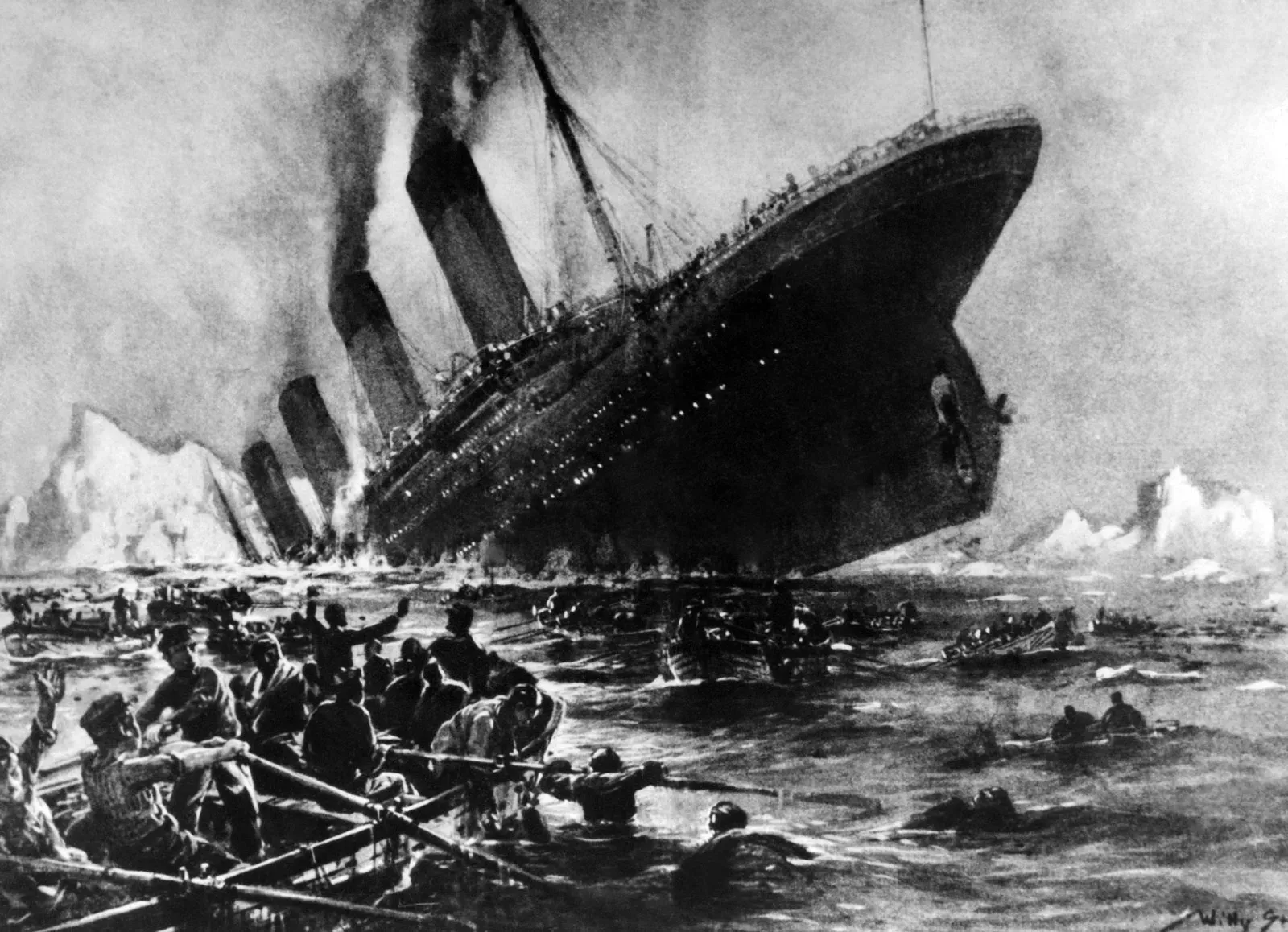
As the ship sank, the stern rose out of the water, straining the midsection. By 2:00 AM, only three collapsible lifeboats remained. Captain Smith released the crew, and the ship's lights went out at approximately 2:18 AM. The Titanic broke in two, with the bow sinking first. It took about six minutes for the bow to reach the ocean floor. The stern settled back in the water briefly before rising again and eventually plunging vertically. At 2:20 AM, the ship sank completely, and the stern imploded due to water pressure.
Many passengers and crew members ended up in the frigid water. The lifeboats, afraid of being overwhelmed, hesitated to return and rescue survivors. As a result, most of the people in the water succumbed to the cold. The death toll exceeded 1,500, with the crew suffering the highest number of fatalities. Among the passengers, those in third class experienced the greatest loss, with only a small fraction surviving. Claims that steerage passengers were prevented from boarding lifeboats were largely disproven, as the situation's urgency was not fully realized by all, and navigating the ship proved challenging for some.
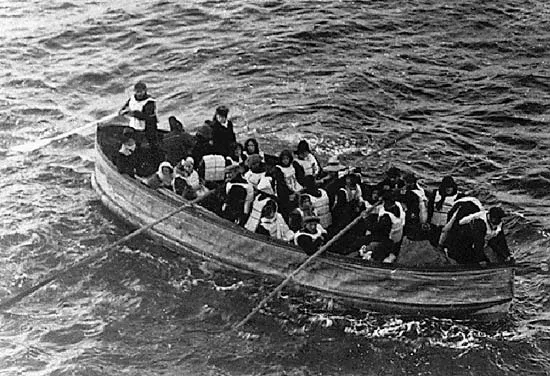
The Rescue
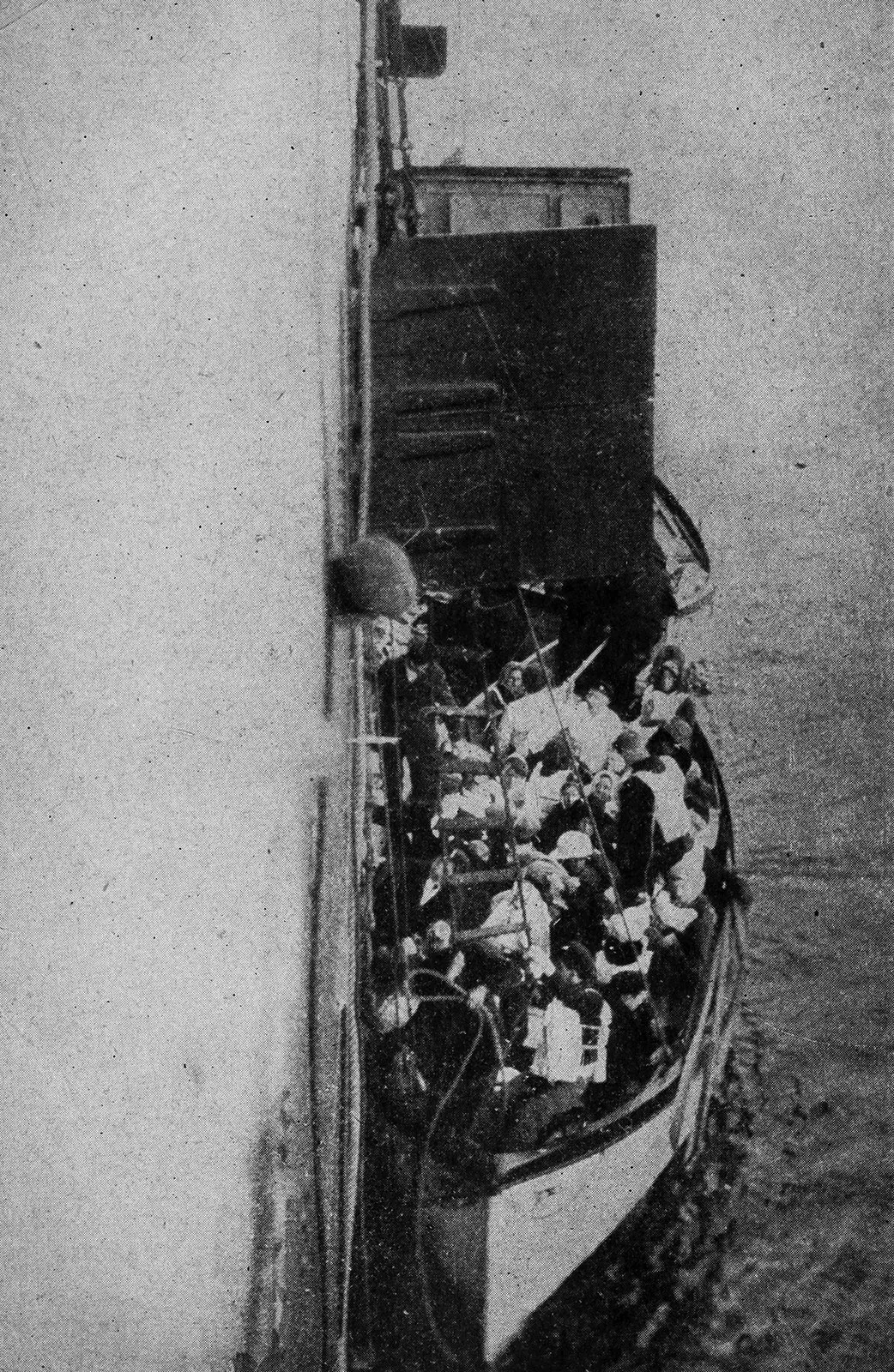
The Carpathia arrived in the vicinity around 3:30 AM, more than an hour after the Titanic sank. Lifeboat number 2 was the first to reach the Carpathia, and over the following hours, all survivors were rescued. White Star chairman Ismay composed a message informing the company's offices about the tragedy and the loss of life. At around 8:30 AM, the Californian arrived after hearing the news three hours earlier. Shortly before 9:00 AM, the Carpathia set course for New York City and arrived on April 18 to a tremendous reception from the crowds.
The Aftermath and Investigation
The victims of the Titanic disaster included crew members and third-class passengers, but notable wealthy families also suffered losses, including the Straus and Astor families. The sinking of the ship, its maiden voyage, and its high-profile passengers captured public fascination, intensifying the magnitude of the tragedy.
The events of that night, the stories of those who perished and those who survived, quickly gave rise to legends. The press highlighted individuals such as Molly Brown, an American who showed leadership in a lifeboat, and Captain Arthur Henry Rostron of the Carpathia, who was praised as a hero. However, some, like Ismay, who survived by boarding a lifeboat, faced public criticism. The desire to understand the tragedy led to inquiries conducted in both the United States and Great Britain.
Discovering the Titanic
Efforts to locate the Titanic's wreck began years after the sinking. In 1985, an expedition led by Robert Ballard successfully captured underwater images of the ship using advanced technology. The footage revealed the Titanic lying in two pieces, with the bow intact and the stern heavily damaged. Rust-colored formations called rusticles, caused by iron-eating microorganisms, covered the wreckage. Over time, significant deterioration has occurred, leading to the loss of notable features.
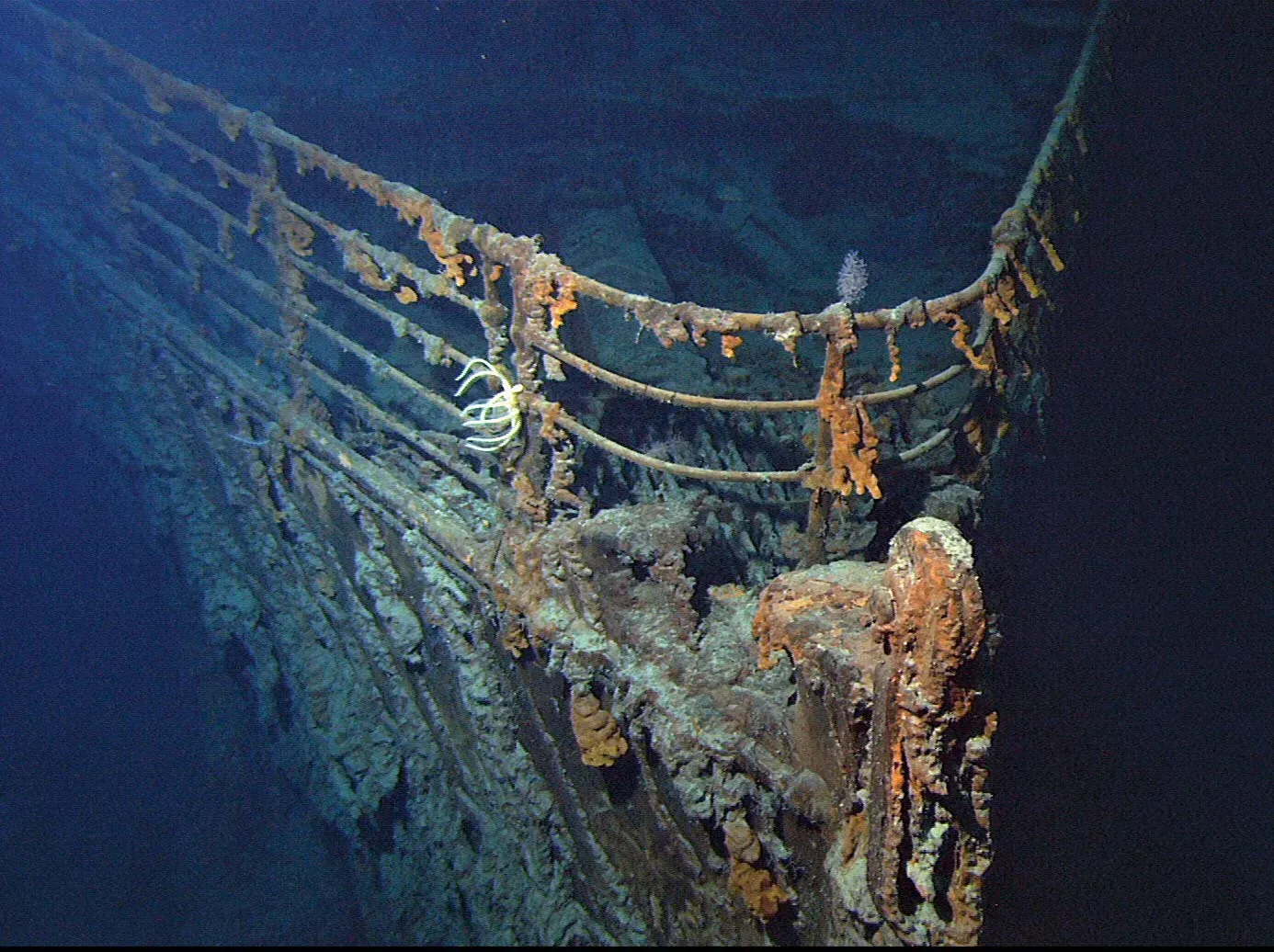
The Titanic, located at approximately 41°43′57′′ N, 49°56′49′′ W, was extensively explored by manned and unmanned submersibles. Contrary to previous beliefs, no long gash caused by the iceberg was found on the ship's hull. Instead, scientists discovered a series of thin gashes, brittle fracturing, and separation of seams in the adjacent hull plates, which allowed water to flood in and sink the ship. Salvagers retrieved small artifacts and sections of the hull, leading to speculation about the role of low-quality steel and weak rivets in the Titanic's sinking.
Influence of the Tragedy
The Titanic disaster has captured the public's imagination, making it a cultural icon. It has been the subject of numerous books and inspired famous movies like "A Night to Remember" (1958) and James Cameron's blockbuster "Titanic" (1997). The artifacts from the ship have been showcased in successful global exhibitions, and tourism to the Titanic wreck has become a profitable business. However, the removal of items from the wreckage sparked controversy due to opposition and jurisdictional challenges in international waters.
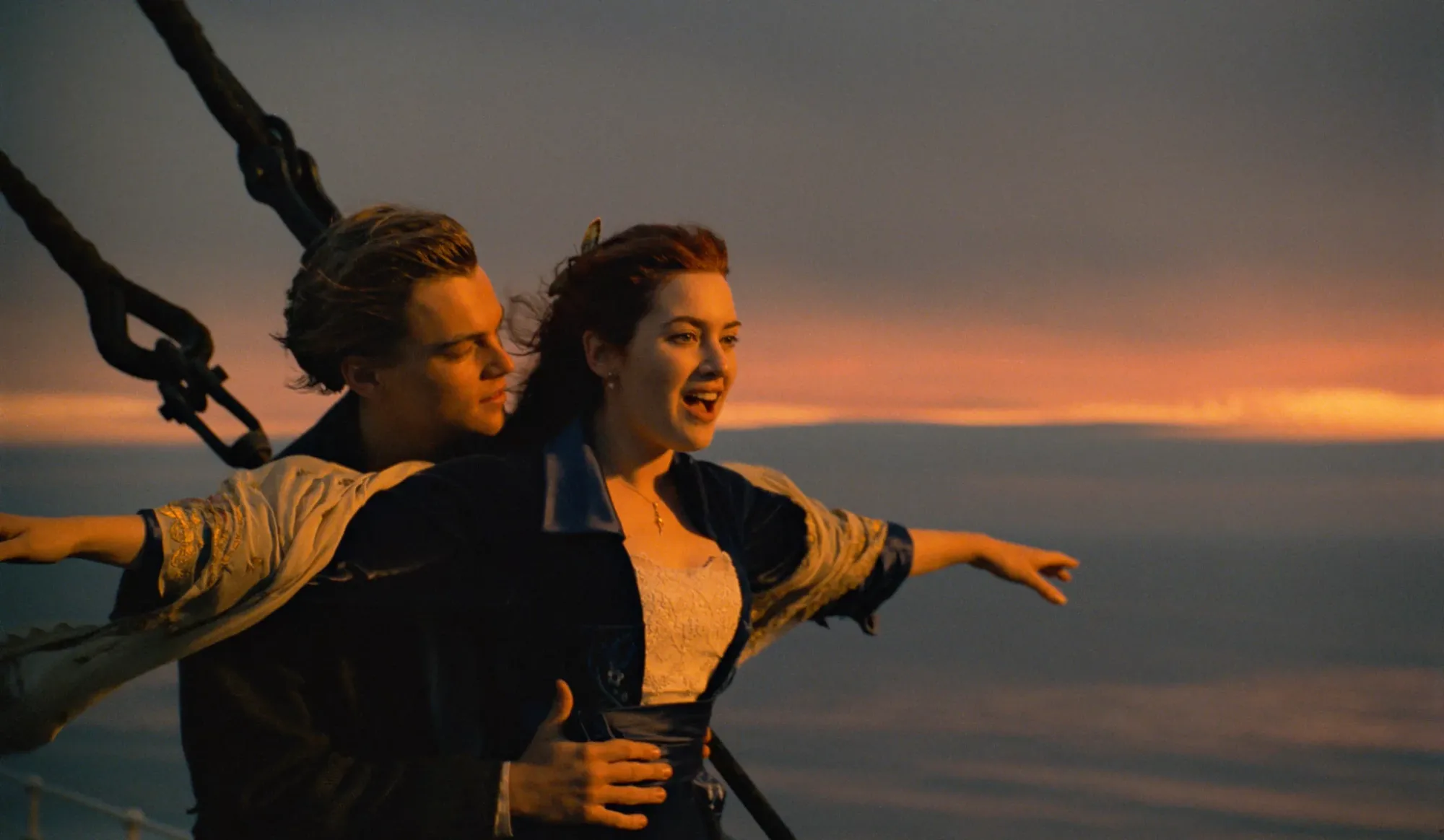
Several museums dedicated to the Titanic attract thousands of visitors annually. Titanic Belfast, opened in 2012 on the site of the shipyard where it was built, became a popular tourist attraction in the city. Although the wreck will eventually deteriorate, the Titanic's legacy is expected to endure in the public imagination.
FAQs
Why did the Titanic sink?
The immediate cause of the RMS Titanic's demise was a collision with an iceberg that caused the ocean liner to sink on April 14–15, 1912. While the ship could reportedly stay afloat if as many as 4 of its 16 compartments were breached, the impact had affected at least 5 compartments.
How many people died in the Titanic?
According to the U.S. committee investigating the sinking, 1,517 lives were lost, and its British counterpart determined that 1,503 died. The crew suffered the most casualties, with about 700 fatalities. Third class also suffered greatly, as only 174 of its approximately 710 passengers survived.
Where is the Titanic now?
The wreckage of the Titanic, discovered in 1985, sits in two parts at the bottom of the ocean nearly 13,000 feet below the surface, southeast of Newfoundland.
Are any Titanic survivors still alive?
No, there are no survivors of the Titanic alive today. The very longest-living person to have survived the Titanic died on the 31st of May 2009. Her name was Elizabeth Gladys 'Millvina' Dean, and she was just two months old when she boarded the Titanic with her family.
Conclusion:
As we remember the Titanic 111 years later, its legacy lives on. The story of this ill-fated ship continues to resonate, reminding us of the unpredictable nature of life and the importance of valuing human safety above all else. The Titanic stands as a symbol of both human vulnerability and resilience, urging us to reflect on our past and ensure that history does not repeat itself. May the memory of those who perished aboard the Titanic forever be honored, and may their stories serve as a reminder of the enduring power of the human spirit.





